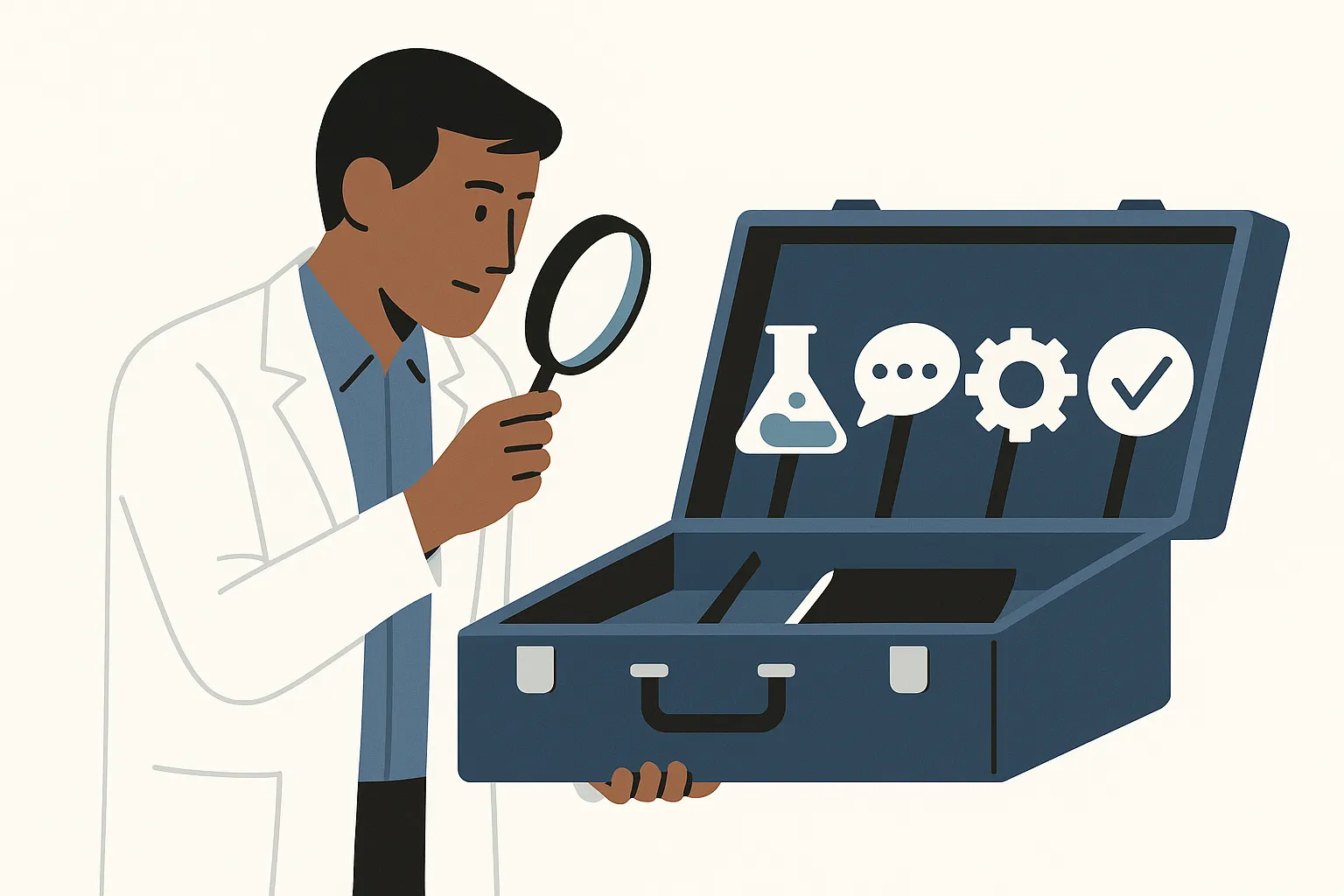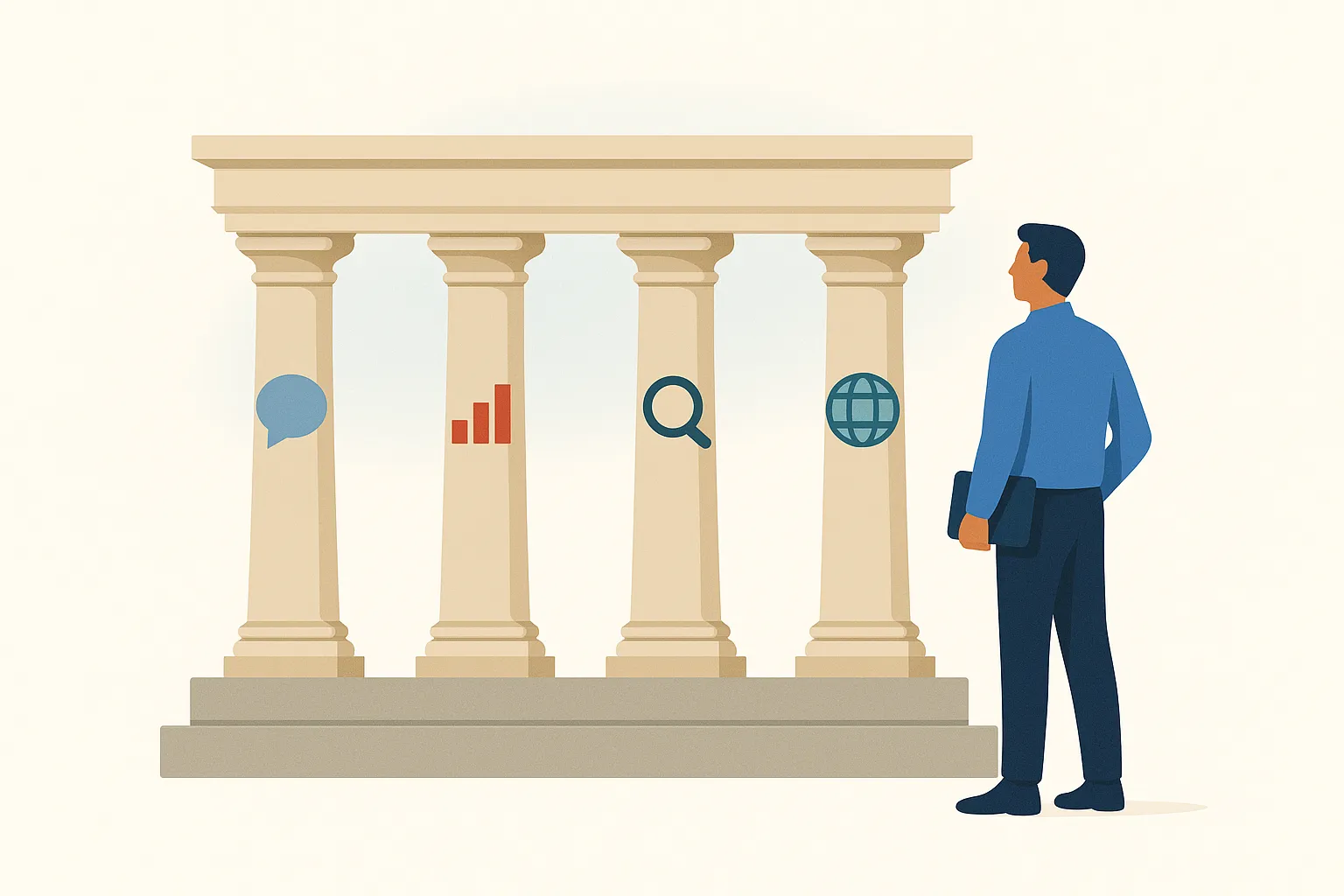
The Danger of Focusing Too Much on Your Competitors
At Clozd, our team of consultants conducts hundreds of win-loss analysis interviews for our clients each month. The other day I conducted an interview where the buyer walked me through their process for selecting a vendor.
This buyer had designed a vendor scorecard that stakeholders at his company would fill in. He and his colleagues were trying to be objective in their selection process. The scorecard included elements such as: product functionality, ease of use, ease of implementation, sales team expertise, vendor’s thought leadership and supporting services, pricing model and economics, etc.

The buyer disclosed to me that my client - the company I was conducting the interview for - had received the highest score. In the end though, the deal was put on hold and remains on life support. The buyer did not move forward because this was the first time his company would be purchasing a solution like this and they have struggled to justify the investment relative to other potential purchases. Thus, my client lost the deal - but not to a competitor. It can be tempting and easy to brand a particular vendor as your biggest competitor - but be careful. The unseen and nameless competitor is often the most dangerous and can take the form of delayed buying decisions (like in this story) or poor sales execution.
One of the biggest benefits of win-loss analysis interviews is the competitive intelligence that they garner. Many of our clients have found that win-loss interviews are their richest source of in-depth competitive intel. But the primary purpose of a win-loss analysis interview should always be to understand why the buyer made the decision they made. We find that our clients’ direct competitors are often less influential in deals than they think they are. The reason you lose a deal may have little (or even nothing) to do with your competition and everything to do with your product market fit or go-to-market execution.
Your Biggest Competitor May Not Be a Direct Competitor
One of the biggest competitors we see across our client-base is “Do Nothing.” Some of our clients, especially cutting-edge technology providers, most often lose deals to “No Decision.” These solutions are new, and buyers are intrigued but unwilling or unable to pull the trigger. In many of these situations, there is not a comparable vendor that actually can hurt you because the buyer does not have another solution to benchmark you against.
The solution to “No Decision” outcomes is to focus on the buyer, their needs, their business case for an investment, their decision making process, and the decision makers and influencers involved. Good, continuous discovery can help you navigate and manage the balance between selling against “No Decision” vs. Competitors.
Another common outcome is when buyers choose to go with multiple, smaller vendors - choosing to purchase components rather than a single, full solution. This is common when (i) the buyer is knowledgeable and confident on how to deploy a solution and doesn’t feel like they need everything your solution offers, (ii) the buyer perceives that the sum total of the smaller components is greater than any one holistic solution, or (iii) the buyer wants to de-risk the purchase and start with a single component.
These losses align more to issues with product market fit or your ability to cleanly meet market demand than anything your direct competitors do. So focus your efforts on right sizing the product, de-risking the pricing model, selling value and ROI over features and functionality, and navigating the process to get those messages to the right audience.
You May Be Your Biggest Competitor
There are a lot of come-from-ahead lost deals in B2B sales cycles. Take a second to process that.
Sales Cycles are not well defined. The starting point, the end point, the rules, the players, etc. all can fluctuate. Great sales people understand this process, where they are at relative to other vendors or options, and are relentless in managing their way through it. They’ll also try to change the rules or reset the goal posts in the sales cycle.
At Clozd, we often see “the favorite” end up losing in the sales cycle. They are the first company in, or even the incumbent. They have relationships with key decision makers. They know the buying entity’s business. For all intents and purposes, they are the hare in the classic children’s tale “The Tortoise and the Hare”. But like the Hare they slow up, rest on their laurels, take the account for granted while the Tortoise plugs away at the sales process. In the end, they lose the deal.

Like the Hare, “the favorite” vendor doesn’t see the loss coming. They feel blindsided because they actually might offer the better solution and should win. We hear buyers say things like, “This was their deal to lose. We expected them to win the contract but they didn’t listen.” Or, “They were the favorite going into this. I wanted them to win but the other vendor did a better job of addressing our needs and tailoring their pitch.”
During our win-loss interviews, buyers will disclose that they went with an inferior solution. Why would they ever go with the “inferior” solution? Because the pricing overall was better, the pricing model better matched their needs, the vendor was more committed to their success, or there was less risk in the deal.
Be paranoid until the deal is done. Don’t underestimate your competitors’ efforts and sales skills or overestimate your buyer’s commitment to you, even if they’ve told you that you are the leader.
Final Takeaway
Focus on the customer more than you focus on your competitors.
It is good to be aware of your competitors, their tactics, their strengths and weaknesses, their innovations, and how they may affect your business. You may learn from your competitors and advance your solutions to better meet customer needs - but you will still just be a copycat. You may learn from their tactics and improve your messaging and positioning to win more - but you will still be playing defense. You may understand your relative strengths and weaknesses to improve your demos and positioning to specific customers.
But you will stay ahead of your competition if you relentlessly focus on your buyer. And you will win deals that neither you nor your competitors would have won, because you have a stronger product-market fit. And you will not give away the deals to your competition because you are assumptive and asleep in a sales cycle.











.svg)










.svg)

.svg)




